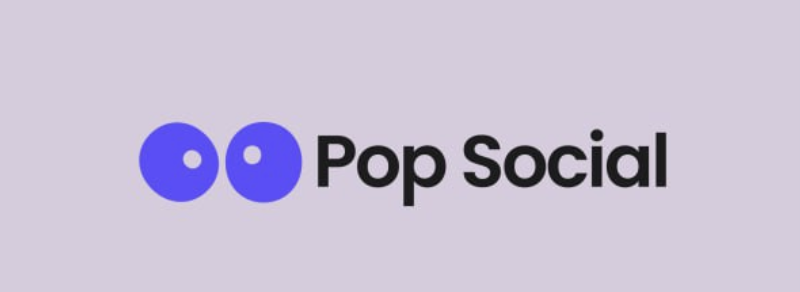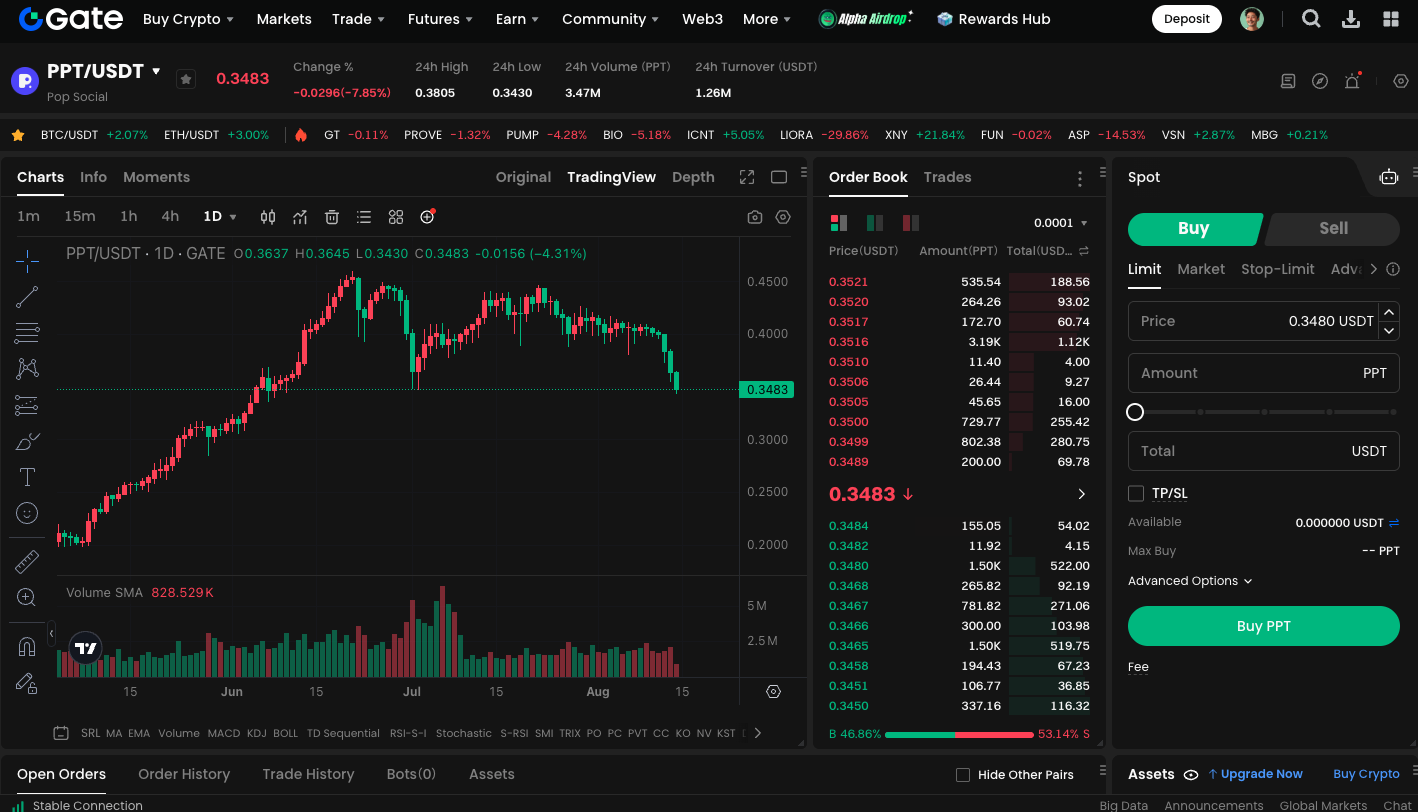What is Pop Social (PPT)?
What is Pop Social?

(Source: popapp_official)
Pop Social is a next-generation SocialFi platform built on decentralized architecture, verifiable reputation, and user privacy autonomy. Its mission is to create a fairer, more transparent social ecosystem where every participant truly becomes a stakeholder in the social economy.
What Makes Pop Social Unique?
Empowering Users and Rewarding the Community
Pop Social empowers users through decentralized identity (DID) and a reputation system, fostering a more trustworthy social environment. The platform introduces the “Pop Credit (PCR)” rewards system, incentivizing users to contribute, engage, and share content, with platform tokens ($PPT) distributed daily based on contribution.On-Chain Content and Decentralized Cloud Storage
The platform supports on-chain content publication and decentralized cloud storage, significantly reducing the risk of data breaches and giving users full control over their social data.Decentralized Governance
Pop Social incorporates a community governance model that allows users to participate in shaping the platform’s future, fully embracing the Web3 vision of user-driven direction.
Pop Social’s Team Background
Pop Social’s founding and operations team is global in scope, drawing expertise from leading organizations such as Binance, Polygon, Huobi, Accenture, MIT, and Credit Suisse. The founder, Michael Shen, brings over 8 years of crypto investment experience and deep market insight. Product lead Goncalo Vincente, former CEO of Carapace, is skilled in product incubation and innovation. This diverse team brings an international perspective. It also provides a solid technical and strategic foundation for Pop Social’s growth.
Pop Social Tokenomics
Pop Social’s native token, $PPT, offers clear functional roles and ensures long-term sustainability. Prysm Economics developed its tokenomics, and is known for their work on projects like Cardano, Polkadot, and The Graph.
How Can $PPT Be Used?
Upgrade features and account permissions
Buy loot boxes and merchandise on the platform
Purchase NFTs and subscription-based services
Reduce platform transaction fees
Send tips to or subscribe to content creators
Run advertisements and boost brand exposure
Content creators can use $PPT to earn revenue and access limited edition NFTs. They can also share in subscription earnings. This incentivizes high-quality content production and builds user loyalty.
Pop Credit (PCR) Rewards System
Users can convert their Pop Credit (PCR) to $PPT up to three times per day. PCR cannot be transferred, but is accumulated through activities such as viewing content, liking, posting, sharing, and inviting friends. These points are central to the platform’s “social mining” model and determine daily token allocation.
$PPT Token Distribution
Pop Social’s token distribution strategy balances community engagement, long-term operations, and market expansion. The following breakdown details the allocation:
Ecosystem Development: 35%—Incentivizes users, creators, and partners to build long-term community value
Foundation Reserve: 30%—Supports long-term growth and serves as a strategic reserve for platform stability
Developer Team: 15%—Rewards key developers and drives ongoing product and feature innovation
Strategic Round Investors: 5%—Allocated to strategic early supporters and partners
Market Making: 5%—Enhances trading depth and liquidity for token price stability
Advisors: 2%—Attracts industry resources and expertise to fuel platform growth
Treasury: 2.77%—Serves as an operational reserve for essential platform expenditures
Launchpads / IDO: 2.24%—Supports public offerings and encourages new user growth
Airdrops: 3%—Incentivizes community growth and user acquisition
This model addresses platform operations, investor returns, and community growth—creating a robust, mutually beneficial economic cycle for all stakeholders.
PPT_USDT Trading
To start spot trading PPT, click the link below: https://www.gate.com/trade/PPT_USDT

Summary
The value proposition of Web3 is to give users authentic digital sovereignty, and Pop Social is bringing this vision to life. With its decentralized foundation, equitable tokenomics, and integration of social and creator economies, Pop Social is redefining what social networks and value distribution look like in the Web3 era. It is distinguishing itself from typical SocialFi applications.
Related Articles

Pi Coin Transaction Guide: How to Transfer to Gate.io

What is N2: An AI-Driven Layer 2 Solution

Grok AI, GrokCoin & Grok: the Hype and Reality

How to Sell Pi Coin: A Beginner's Guide

Crypto Trends in 2025
